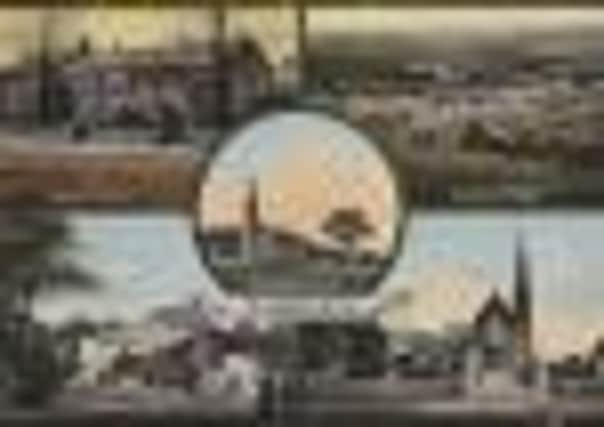ROGER FROST: The Cobden influence at work in Sabden’s history


I am very fond of the Ribble Valley and, consequently, we have looked at Whalley, Great Mitton, Knowle Green, Dunsop Bridge and Pendleton, but today we are a little nearer to home in Sabden.
I recall my first visit to the village, many years ago. I had passed through Sabden before but it was not until I was a teenager, when I used to go for weekend walks, that I had the chance to have a look around. A few of my friends at St Theodore’s came from the village and their enthusiasm for the place (together with my determination to find a treacle miner!) was really the reason for my visit.
Advertisement
Hide AdAdvertisement
Hide AdHarle Syke and Haggate in Briercliffe had been my home for all of my life until then (the early 1960s) and I thought I knew what mill villages were all about. My visit to Sabden disabused me of that. The villages of Briercliffe, particularly Harle Syke, were functional – houses, mills, workshops, churches, chapels, conforming to a strict grid iron pattern.
Sabden was clearly a mill village, with a not dissimilar variety of buildings, but their arrangement was conspicuously different. To my mind Sabden was visually more attractive than Harle Syke yet, superficially, both villages were the product of industrialisation and were under construction at roughly the same time.
I now understand the reasons for the differences between the villages but imagine, if you can, my first visit to Sabden. Wherever I looked, though, there were differences in how local building materials had been used and the general look of the villages, the buildings were similar. Our parish churches illustrate this point very well as they both are stone built, Early English or “Lancet” in design, have slender spires and sport octagonal towers. Not surprisingly, given what I have noted, the churches were dedicated in the same year, 1841. However, there is an interesting observation which can be made about the churches. The writers of that wonderful little book “Sabden Past & Present” (2004) note: “The Anglican Church is a relative newcomer to Sabden, as its position, tucked away on the edge of the village, suggests”. In Harle Syke the church was just about the first building in the village yet it manages to be hidden away as if it had been an after-thought.
The main reasons why Sabden and Harle Syke are so different are to do with landscape and history.
Advertisement
Hide AdAdvertisement
Hide AdSabden was settled a little earlier than the village in Briercliffe and whereas Harle Syke has a hillside situation, drained only by very small streams, Sabden is in a valley drained by numerous streams principle among them, perhaps, being Sabden Brook and Churn Clough.
Though Sabden had its cotton manufacturing mills, and, before that, its handloom weavers’ cottages, some readers might be surprised to learn it was neither of these industries which made Sabden distinctive.
Calico printing was Sabden’s most notable industry during the Industrial Revolution and the village produced a number of well-known calico printers, the best remembered being Richard Cobden, the famous radical, leader of the Anti Corn Law League, free trader, MP for Stockport and author of the Cobden Treaty of 1860.
Cobden (1804-65) was not a local man. He came from a Sussex farming family but, by a circuitous route too complicated to explain here, he became associated with calico printing in Manchester and Sabden. It was in the village, at the old Counting House, he gave his first political speech and his name should be remembered in the village school because, a great believer in education for everyone, it was founded by him circa 1836.
Advertisement
Hide AdAdvertisement
Hide AdIn fact there should be a Cobden trail in Sabden as numerous buildings and sites have Cobden connections. These range from industrial sites, to educational buildings and houses. Dial Row was one of his projects and, in fact, Cobden was as thoughtful in his housing policies as he was in most other things. It was his idea for Cobden, Sheriff, Foster & Co., to put up the funds for the building of better houses which would eventually, through the payment of rent, become privately owned by his workers.
By contrast, Harle Syke did not have a benefactor like Richard Cobden, and others, in Sabden. Almost everything built in my village was constructed by descendants of poor handloom weavers and, perhaps not surprisingly, there is no equivalent of The Whins or Lower Whins in Harle Syke.
I have quite a number of postcards of Sabden in my collection but I have chosen just one as it gives five views of the village. It was posted in 1915: the sender helpfully dates it 9th August and “Ida” writes from 109, Padiham Road, Sabden, “near Blackburn”, the latter being something of a surprise to me.
In the middle of the card there is a view of St Nicholas’s Church which shares another distinction with Briercliffe St James’s in that it first had the status of a chapel becoming a church, with its own parish, only a few years later. The Council School, top left, is the building which has Cobden connections, and to the right, there is a general view of the village.
Advertisement
Hide AdAdvertisement
Hide AdBottom left there is a view of the splendid Clitheroe Road in Sabden which climbs to the Nick o’ Pendle and, to the right of this image, is a view of the now demolished, but very interesting, Wesleyan Chapel. Lastly, I realise I have not been able, in this brief article, to do justice to Sabden but it really is worth a visit and, perhaps, we should revisit the village in this column in the near future?